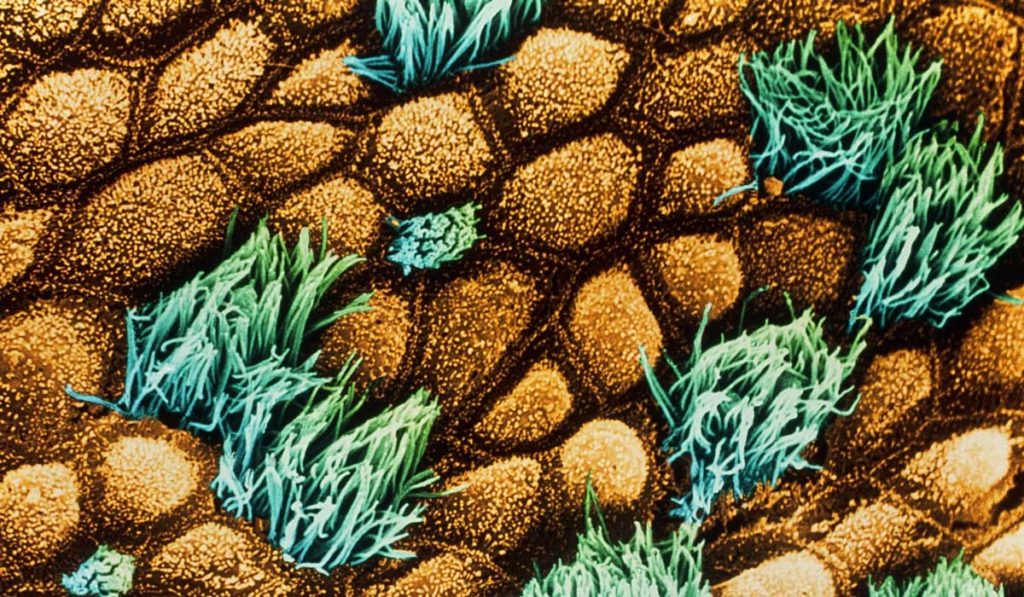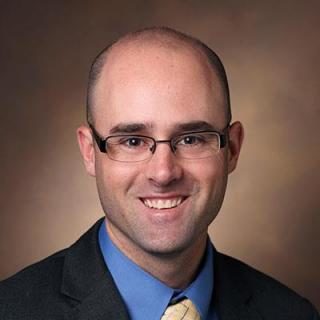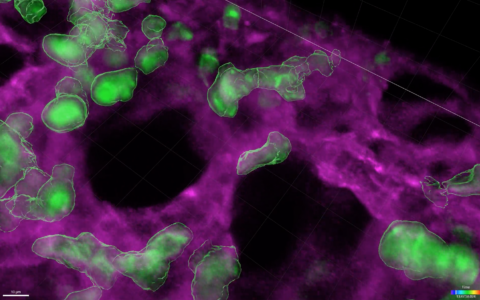Greater use of nasal nitric oxide (nNO) testing could improve diagnostic abilities for the rare disease primary ciliary dyskinesia (PCD), according to a group of researchers that includes Michael O’Connor, M.D., an assistant professor of pediatrics at Vanderbilt University Medical Center. The group has published guidelines for nNO use in diagnosing PCD in the Annals of the American Thoracic Society.
“PCD symptoms are easy to mistake for other more common diagnoses such as asthma,” O’Connor said. Hallmark symptoms of PCD include a chronic, year-round wet cough, a year-round runny nose, and nasal congestion. PCD can lead to frequent respiratory and sinus infections and often pneumonia.
Although nNo analyzers are approved for clinical use in Europe and Canada, in the U.S. they are only approved for use in research settings, O’Connor said. Currently, U.S. patients who undergo nNo testing do so as participants in a clinical trial and at no cost to themselves. The guidelines do, however, apply across North America.
Filling a Diagnostic Gap
Until now, clinicians trying to rule out PCD relied on two kinds of diagnostic tests, genetic testing or ciliary biopsy, but neither test is perfect. PCD genetics are complex, and science has not yet identified every gene involved in the illness, meaning that genetic tests are not ironclad. “As for biopsies, 30 percent of people with PCD seems to have a normal ciliary structure because the structures that are abnormal are too small to be seen,” said O’Connor.
Genetic tests and biopsies can both appear normal, yet doctors nonetheless strongly suspect PCD. “With those patients, we were at a loss. We thought they had PCD but it was hard to mount the evidence to move towards treatment,” O’Connor said.
Treatments for PCD can be taxing and address symptoms, rather than being curative. “Before committing a family to take on that burden of care, you want to be confident about what the disease is that you’re treating,” O’Connor said. Treatments include medications, aerobic exercise, and daily chest physical therapy maneuvers that can be uncomfortable and time-consuming.
“Before committing a family to take on that burden of care, you want to be confident about what the disease is that you’re treating.”
Proof Positive of PCD
“By doing repeated nNo testing, you can get proof of a PCD diagnosis. People with PCD have low nNo values all the time, on the best day of their life, and on the worst day,” O’Connor said. The test is suitable for cooperative patients age five and older who can blow into a device inserted into their mouth while closing their vellum (the soft palate at the back of the throat).
The guidelines specify procedures for nNo measurement that are to be followed by North American organizations belonging to the PCD Foundation’s Clinical Research Center Network. “Adherence [to the guidelines in the paper] ensures reliable nNo testing and high diagnostic accuracy when employed in a population with appropriate clinical phenotypes for PCD,” the authors wrote.
Guidelines cover matters such as patient selection, training personnel to run the tests, testing maneuvers, equipment checks and device maintenance. They also address the acceptability and interpretation of test results.
Expanding the Procedure in North America
Nasal nitric oxide analyzers, which are not widely available today, come in two basic variants. One kind of equipment uses chemiluminescence technology, and O’Connor says each machine can cost between $30,000 and $50,000 – plus the cost of reagents. Electrochemical analyzers cost less but are not as accurate and are not recommended in the new guidelines. O’Connor noted that currently, only three hospitals in the Southeast U.S. have nNo analyzers.
“Vanderbilt was one of the earlier sites to start using this technology,” he said. “This was not a hard sell here. Our leadership recognized that this was important for the leading edge, comprehensive care that we want to provide at Vanderbilt,” O’Connor said. Patients with rare diseases like PCD need this kind of advocacy and action, he added.






